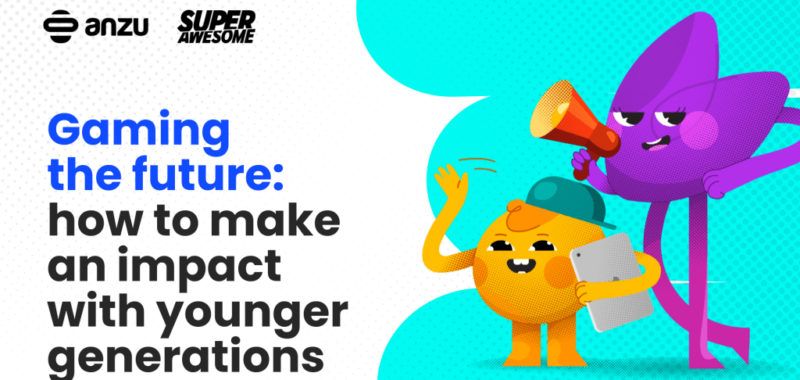Gaming advertising platform Anzu and kidtech company SuperAwesome recently released a new report on which they collaborated. The report, called “Gaming the future: how to make an impact with younger generations,” details the effects that in-game advertising has on younger gamers, including how it can inspire interest and brand loyalty. The study pertains to both Gens Z and Alpha, and how they interact with brands who meet them within their favorite games.
According to Anzu’s report, younger generations of gamers are already attuned to ads and expect to see them. The report states that 75% of the gamers surveyed said ads improved their experience, and 40% said branded content can improve the games they play. They’re also more aware of how brands advertise to and target them, and 55% of those surveyed show a strong affinity for branded experiences, being able to recall the brands favorably after playing them.
GamesBeat spoke with Anzu about the details of the report, and Anzu said two of the reasons in-game ads resonate so much with younger generations are 1) younger consumers prefer interactive media over passive consumption and 2) they prefer not to have to split their attention between multiple different experiences. In other words, if brands can meet young gamers where they are, and on their terms, they have a much higher chance of being fondly remembered.
Nerissa MacDonald, Anzu’s EVP of global sales, said in the report, “This research highlights how gaming has evolved into a cultural cornerstone for younger generations, shaping their social currency and identity. It’s evident that, to stay relevant, brands must meet these audiences where they are. By leveraging the insights and strategies outlined in this report, brands can confidently take the first step towards meaningful engagement in this space.”
Appealing to the young gamers in the audience
Anzu and Superawesome’s report focuses on the Generation Z and Alpha gamers who partake of digital experiences. According to their findings, brand loyalties can lock in at a young age — specifically by the age of 16-19. The report suggests that brands that don’t advertise to this demographic run the risk of missing that window of time to build a rapport with young gamers.
One notable fact in the report is that young gamers who view ads have a large amount of influence on household spending. The report states that 86% of parents of Gen Alpha gamers say their children’s opinion matters to them when making purchases, especially since their knowledge of specific brands and products can make the parents’ job of deciding on products easier.
This influence extends across different kinds of product verticals, including toys, clothes, groceries and electronics. Kids who have seen ads in game are, according to Anzu, more likely to influence others on those brands than they are for products they’ve seen on other forms of digital media.
Jessica Whatson, SuperAwesome’s head of innovation and delivery, said in the report, “In a time where attention is more fragmented than ever, it’s so important to use resources like this report to build a greater understanding of player behaviors and motivations for brands. Generalized tactics don’t connect with this audience, and we can we that their influence is extensive. As platforms continue to compete for attention, it’s vital to work with partners who can activate multi-channel strategies to truly speak to Gen A and Gen Z in an appropriate way.”
Source link

